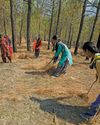
EXACTLY TEN years ago, the Supreme Court of India delivered a landmark judgement on a crucial case involving under the patent protection for pharmaceuticals country's new intellectual property rights regime. It was a case that had riveted the world since the outcome had major implications for the pharma industry and for patients. It was the first test of the country's patent law, which had been amended to comply with World Trade Organization (WTO) rules, and specifically of a particular part of the law, Section 3d, which delineated what was not patentable in India. This section deals with patents for derivatives of known substances and new uses of a known substance, a hugely contested domain.
The legal challenge had come from Swiss drug giant Novartis which had filed a special leave petition (SLP) in the apex court; its final attempt to get a patent for a new form of its anti-cancer medicine Glivec after several courts had rejected the claim. The claim was for a beta crystalline version of its base compound imatinib mesylate, which had been patented much earlier. A division bench of the Supreme Court rejected the SLP and Justice Aftab Alam, who wrote the carefully nuanced judgement, laid down the fundamental reasoning for the law and its application. While the court considered the counter arguments-generic companies, patient groups and lobbyists had also filed SLPS-it was not unduly swayed by the argument for access to the medicine.
Bu hikaye Down To Earth dergisinin April 01, 2023 sayısından alınmıştır.
Start your 7-day Magzter GOLD free trial to access thousands of curated premium stories, and 9,000+ magazines and newspapers.
Already a subscriber ? Giriş Yap
Bu hikaye Down To Earth dergisinin April 01, 2023 sayısından alınmıştır.
Start your 7-day Magzter GOLD free trial to access thousands of curated premium stories, and 9,000+ magazines and newspapers.
Already a subscriber? Giriş Yap

THE CIRCULARITY ARGUMENT
A circular economy can help India achieve its developmental aspirations while following the low-carbon pathway. It will also help address the challenges of waste management, pollution and overexploitation of natural resources. Industries are already innovating to reuse high-volume wastes and have shown that the transition can usher in both environmental and financial windfalls

Banking on flawed drug voluntary licences
The Medicines Patent Pool is pushing for more VLs, but its bad deal with Novartis on a cancer drug shows the pitfalls

Lasting solutions
For the first time, the UN has recognised the role of indigenous communities in tackling aridity. A repository of traditional knowledge India has the wherewithal to lead the way

IMD at 150
India's journey into modern weather forecasting took a decisive turn 150 years ago with the establishment of India Meteorological Department during the British rule. The agency has come a long way since then, shaping the way the country predicts and responds to its diverse climate challenges

Every drop counts
In drought-prone Marathwada region, 14 villages have managed to counter water shortage by budgeting the resource

Threat to survival
Hollongapar Gibbon Sanctuary in Assam faces ecological challenges as railway electrification and hydrocarbon exploration endanger its fragile biodiversity

'Migration is going to be a battlefield'
AMITAV GHOSH is one of the foremost chroniclers of our times. His literary sojourn includes writings on topics that range from languages to climate change to human lives. His latest book, Wild Fictions, brings some of his works on these issues under one title. In a conversation with RAJAT GHAI, Ghosh shares his views on the future of human movement. Excerpts:

Face of future
California wildfires confirm forest fires are intensifying in a hotter world, emitting substantial amounts of greenhouse gases and reinforcing global warming

Friends of the forest
Residents of 30 villages in Uttarakhand establish a model for public participation in saving forests from wildfires

Climate-crazy playbook
Just hours after his second (and final) term began on January 20, US President Donald Trump unleashed 46 presidential actions. Several of these are centred on the US' climate commitments, energy transition, migration and trade policies, and are likely to have negative global implications